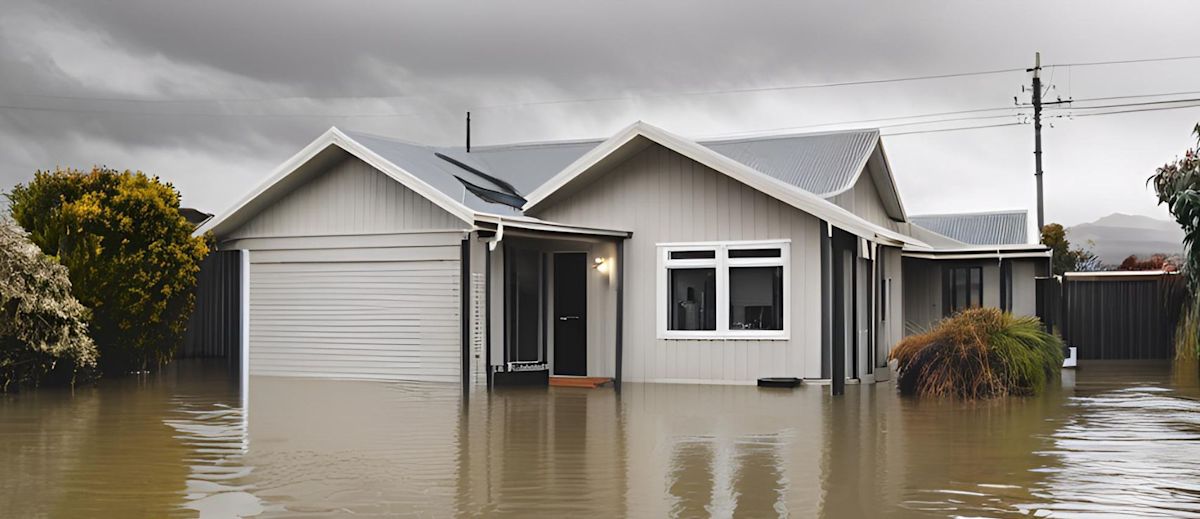
House Insurance for Older Homes and High-Risk Properties
Older homes in New Zealand have a special charm—whether it's a classic villa in Ponsonby or a heritage cottage in Dunedin. These properties carry history within their walls, but they also come with unique insurance considerations. The same goes for homes in challenging locations, from coastal areas facing rising seas to properties in earthquake-prone regions. This guide breaks down house insurance for heritage and high-risk properties in New Zealand, making it easier to stay informed and protected.
The unique world of heritage and high-risk property insurance
Insuring heritage-listed homes or properties in flood-prone or earthquake-prone areas in New Zealand requires specialised policies and careful consideration. Older homes often feature materials and construction methods that aren’t common today, while high-risk properties face challenges from climate impacts and geological risks. Understanding these differences is key to securing the right coverage—without blowing the budget.
Why older homes need special attention
When it comes to insuring older homes in New Zealand, several factors come into play. Native timber, traditional construction, and heritage restoration requirements can all impact your insurance options.
For heritage-listed homes, maintaining historical accuracy during repairs or renovations is crucial. Guidelines from Heritage New Zealand emphasise the need to use period-appropriate materials and adhere to preservation standards.
Heritage homes often require:
Specialised craftspeople for repairs
Period-appropriate materials
Compliance with heritage preservation guidelines
Additional documentation for insurance purposes
Want to explore more about home insurance? Check out our Further reading section at the end—it's packed with expert insights and practical tips!
How to insure homes in flood-prone or earthquake zones in New Zealand
Insurance coverage for climate-affected properties in New Zealand has changed significantly in recent years.
According to the Insurance Council of New Zealand, climate change is increasing the frequency and severity of extreme weather events, leading to higher premiums for high-risk properties.
Homes in flood-prone areas or earthquake zones face unique challenges. The Earthquake Commission (EQC), for example, emphasises the importance of seismic strengthening and risk assessments to qualify for comprehensive insurance coverage.
For flood-prone properties:
Detailed flood risk assessments
Specific policy clauses for water damage
Potential flood mitigation requirements, such as barriers or raised foundations
For earthquake zones:
Comprehensive house insurance for earthquake zones often includes specific structural requirements
Regular building assessments may be needed
Additional coverage for seismic strengthening might be necessary
When insuring high-risk properties, reviewing policies tailored to these unique challenges is essential. Platforms like Quashed make this process easier by providing transparent, easy-to-understand comparisons.

Smart ways to manage your premium costs
House insurance for heritage-listed homes or high-risk properties in New Zealand can be more expensive, but there are ways to manage costs.
Property improvements that matter
Certain property improvements may help lower your premiums—check with your insurer for details.
Installing modern safety features
Upgrading electrical and plumbing systems
Implementing flood prevention measures
Strengthening foundations and structural elements
Documentation is your friend
Keep detailed records of the following:
All maintenance and upgrades
Professional assessments and reports
Historical significance documentation for heritage properties
Risk mitigation measures implemented
Curious about more ways to protect your home? Check out our ‘Further reading’ section at the end for expert insights and actionable tips to guide you.
Tips for insuring older homes or high-risk properties
Don’t automatically accept your first quote for house insurance, especially if you’re insuring heritage homes or properties in flood-prone areas. Prices can vary significantly between insurers.
Consider bundling policies for potential discounts
Ask about specific heritage home restoration coverage if it’s relevant
Review flood and earthquake coverage details carefully
Understand your excess options and how they affect premiums
Ensure your home has the right coverage—review your insurance options today
Protect your heritage home's story—avoid costly insurance gaps today. Here's why Quashed:
Compare leading insurers: Easily compare policies from insurers—just enter your details and get personalised quotes that match your needs.
Transparent pricing: Get real, upfront pricing based on your details—no guesswork, just clear, personalised quotes with key cost factors explained.
Simplify your insurance management: Manage all your insurance policies in one place—making it easy to track coverage, renewal dates, and updates.
Further reading
Explore these articles to gain deeper insights into house insurance:
How Climate Change is Shaking Up House Insurance: Understand climate risk
The Ins and Outs of Insuring Your Rental Property: A practical guide to covering your rental property
House Insurance Cost Increases: Find out what’s driving premiums higher
Rethinking Insurance for First-Time Home Buyers: Helpful tips for new homeowners
How to Compare House Insurance Quotes in New Zealand: A simple approach to comparing quotes
Guide to House Insurance: A simple guide for Kiwis
FAQs
Why is it challenging to insure older homes in New Zealand?
Older homes often have outdated features like original wiring, scrim wall linings, or aged roofing materials, which can pose increased risks. Insurers may require updates or impose higher premiums to mitigate these risks.
What steps can I take to insure a house with unconsented structures?
Unconsented additions can complicate insurance coverage. To address this:
Seek a certificate of acceptance from your local council to verify that the work complies with the Building Code.
Discuss with insurers whether they will cover the unconsented area once certified.
Consider making the vendor obtain the necessary certification as a condition of sale.
Why do insurance premiums increase for properties in flood-prone areas?
Properties located in flood-prone zones are at a higher risk of damage, leading insurers to adjust premiums accordingly to cover potential claims. This risk-based pricing ensures that those in higher-risk areas contribute proportionally to potential payouts.
How can I confirm if a property is insurable before purchasing?
Before finalising a property purchase:
Obtain the current insurance details from the seller.
Contact the existing insurer to see if they will continue coverage under your ownership.
Alternatively, reach out to multiple insurers with the property's details to assess insurability and obtain quotes.
What are common insurance requirements for older homes?
Insurers often look for:
Updated electrical wiring (replacement of original wiring with TPS wiring).
Removal of scrim or sarking wall linings.
A roof in good condition or replaced within the past 30 years.
Sound original piles and foundations.
No historical classification that might restrict renovations.
Well-maintained exterior cladding without defects.
Is it possible to transfer the existing insurance policy when buying a house?
In some cases, especially in high-risk areas like Wellington, transferring the existing insurance policy from the seller to the buyer can be a practical solution. This approach ensures continuity of coverage, as some insurers may be hesitant to underwrite new policies for certain properties.
How does living in a high-risk area affect my insurance options?
Residing in high-risk zones, such as flood-prone or earthquake-prone areas, can lead to:
Limited insurance providers willing to offer coverage.
Higher premiums due to increased risk.
Specific exclusions or higher excesses in policies.
Potential difficulty in obtaining full replacement coverage.
What should I do if I can't find insurance for a high-risk property?
If standard insurers decline coverage:
Consult with insurance brokers who have access to a wider range of providers.
Explore specialty insurers that focus on high-risk properties.
Consider implementing risk mitigation measures, such as installing flood defenses or retrofitting for earthquake resilience, to make the property more insurable.
Why has my house insurance premium increased when I haven’t made a claim?
House insurance premiums can rise even if you haven’t made a claim due to factors like inflation, rising rebuild costs, and insurer-wide risk adjustments.
Even without personal claims, insurers adjust premiums based on market-wide risk factors. A rise in extreme weather events or higher repair costs can impact everyone’s premiums.
Global reinsurance costs also play a role, as insurers pass these expenses onto policyholders in high-risk regions like Wellington.
What can I do to reduce my house insurance premium?
You may be able to lower your premiums by:
Increasing your excess – higher excess = lower premium.
Reviewing your sum insured – avoid over-insuring or under-insuring.
Paying annually instead of monthly – some insurers charge extra for monthly payments.
Bundling policies – house and contents insurance discounts are available.
Improving home security – fire alarms and security systems can lower premiums.
Comparing insurers regularly – prices vary, so shopping around helps.
This article provides general information only and does not constitute insurance or financial advice. Insurance policies vary between providers, and you should check with your insurer or a licensed adviser for guidance specific to your situation. For full details, refer to Quashed’s terms and conditions.
